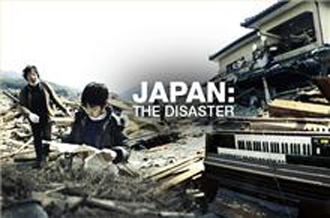Collateral damage from Fukushima hits Europe
The nuclear disaster in Japan impacted global energy markets and European power companies, along with the environment.

 |
| The Japanese operator of the Tepco Nuclear Plant faces compensation claims worth more than $38bn [GALLO/GETTY] |
Several leading European electricity providers and nuclear power plant constructors now count as part of the collateral damage caused by the tsunami that destroyed the Japanese nuclear power plant of Fukushima last March.
In reference to the German government’s decision to phase out nuclear power soon after the meltdown at the Fukushima Daiichi plant, Johannes Teyssen, CEO of E.ON, one of Germany’s leading electricity providers and power plant operators, warned the public that the industry’s balance sheet would be affected by “extraordinary costs caused by (these) market shifts and regulations”.
Keep reading
list of 4 itemsTurtles swimming to extinction in Malaysia as male hatchlings feel heat
Could shipping containers be the answer to Ghana’s housing crisis?
Thousands protest against over-tourism in Spain’s Canary Islands
Data tabulated by the Free University of Berlin suggests that each of the eight nuclear power plants, had they remained in operation, would have generated a net income of one million euros per day for E.ON and other providers.
Earlier this month, E.ON, along with Germany’s three other leading electricity providers RWE, Vatenfall and EnBW, announced plans to slash 20,000 jobs, and braced themselves for losses amounting to billions of dollars.
E.ON predicted an unprecedented depreciation of the company’s value by three billion euros ($3.9bn), and said it would be compelled to reduce its worldwide personnel by 11,000 in the coming months.
The three other companies also warned that a further 10,000 jobs would have to be sacrificed in 2012 to make up for operational losses, portending a mass exodus of skilled and semi-skilled labourers from the industry.
The state-owned French company AREVA, a specialist in the construction and management of nuclear power plants as well as a premier operator of uranium mines and nuclear waste facilities, also announced billion-dollar losses and substantial personnel cutbacks.
Back in November, AREVA reported losses of up to 1.6bn euros ($2.1bn) for 2011 and anticipated losses worth 2.4bn euros ($3.1bn) in the coming fiscal year.
 |
| Read our complete coverage of the March 11, 2011 earthquake, tsunami and nuclear meltdown |
An AREVA spokesperson said that these losses were due to the company’s unprofitable investments in uranium mines in countries like Namibia and South Africa.
The spokesperson also estimated that AREVA would invest an additional 150m euros ($196m) in the Olkiluoto Nuclear
Power Plant – a so-called third generation pressurised water reactor (European Pressurised Reactor or EPR) that has become virtually synonymous with the enormous economic risks associated with nuclear power.
AREVA started constructing the Finnish plant in 2005 with an estimated construction cost of 3bn euros ($3.92bn). However, delays and mismanagement could likely double the cost to some 6.6bn euros.
AREVA’s other EPR project in Flamanville, France, began in December 2007 at an expected cost of 3.5bn euros ($4.57bn) and was scheduled for completion in 2012.
Last July, however, AREVA’s partner Electricite de France (EdF) announced that estimated costs have exploded to 6bn euros ($7.84bn) and warned that completion of construction is delayed to 2016.
Additionally, AREVA’s long-term and lucrative partnership with the German electronic giant Siemens came to end this year, when the latter terminated its nuclear energy business unit following the uproar over Fukushima.
While few of the corporations have publically acknowledged Fukushima as the major crack in the nuclear industry’s foundation, experts like Stefan Schurig, director of the climate energy for the World Future Council, are convinced that “Fukushima was one of the last nails in the coffin for nuclear energy”.
“The Japanese catastrophe confirmed existing doubts about the safety of nuclear energy”, Schurig said. “It is only a matter of time before all countries phase out nuclear power.”
Schurig pointed to the lingering tragedies of the Fukushima crisis, such as widespread contamination of the surrounding area with Caesium-137, irreversible oceanic pollution and food supplies made inedible by poisoned farmland, problems whose effects will be felt for many years to come.
“The whole region will be uninhabitable for years”, Schurig said.
Many believe that last year’s disaster in Japan had a more profound impact on the energy market than previous environmental disasters.
“The oil spill in the Gulf of Mexico, caused by the explosion at Deepwater Horizon in 2010, had no sensible (or lasting) effects on the use of fossil combustibles”, Schurig said.
“But Fukushima put an end to the myth that highly industrialised countries like Japan could guarantee absolute safety and control over the production of nuclear energy”, he pointed out.
In addition, he said, the catastrophe of Fukushima exposed nuclear power’s hidden costs and potential shortfalls.
For instance, the Japanese operator of the nuclear power plant Tepco is currently weathering compensation claims totalling over 34bn euros ($44.4bn) for 2011 alone.
In contrast, renewable energy sources such as wind, solar, and biomass energy are considerably less expensive and will become ever more so with development of the technique, Schurig said.
As if to confirm Schurig’s assertion, E.ON announced this month that, parallel to reducing its share of nuclear power, it would invest 7bn euros ($9.14bn) in renewable energy sources, particularly offshore wind turbine parks and thermo solar technology, over the next five years.
A version of this article was first published by Inter Press Service news agency.